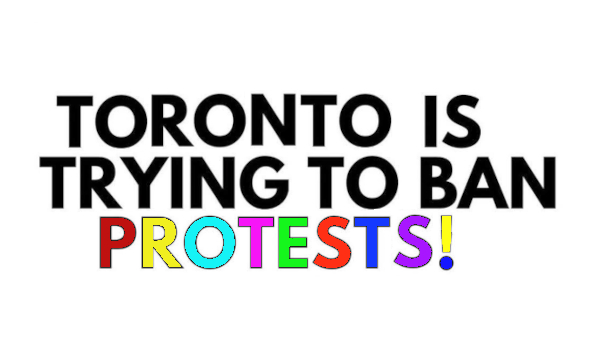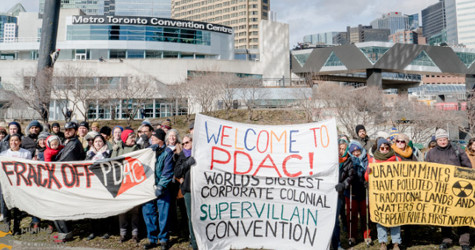The Miller Regime and Suburban Growth Politics
In the City of Toronto, the 2006 municipal elections brought few surprises. Incumbent Mayor Miller was declared the winner seconds after the polls closed. The composition of City Council changed little. Most incumbents were reelected comfortably. NDP and labour-backed candidates failed to unseat right wingers like Case Ootes and Cesar Palacio. But thanks to the election of Gord Perks in High Park, Anthony Perruzza in Downsview, and Adrian Heaps in West Scarborough Mayor Miller can count on still stronger support from Council. Since the City of Toronto Act gives the mayor the power to appoint the new executive committee, we can talk about a veritable ‘Miller regime.’
In the mayoral elections, Mayor Miller faced little serious opposition from the right. Challenger Jane Pitfield tried unsuccessfully to put a stamp on the campaign by pushing the predictable neoliberal and conservative buttons. Her calls to criminalize panhandlers, hire more police officers, buy a police helicopter, ‘phase out unions,’ freeze taxes, and incinerate garbage echoed the populist antics of Miller’s predecessor Mel Lastman. Full of contradictions and qualifications, Pitfield’s claim to a hard-right line convinced few.
Pitfield did not have the enthusiastic backing of the power brokers that brought Lastman to power in the late 1990s. Even after Pitfield had declared her candidacy, pundits continued to expect the ‘real’ right-wing challenger to Miller to emerge. Bay Street and the development industry seem to have decided to wait out this term. Miller’s own establishment credentials have helped in his regard. Starting with his first mayoral campaign in 2003, Miller (a former Bay Street lawyer) has surrounded himself by Bay Street fundraisers with strong Tory and Liberal connections. During his first term, he established a largely cordial relationship with the Toronto Board of Trade.
Pitfield’s campaign resonated little not the least because Miller had already incorporated many key right-wing concerns. When Pitfield asked for law and order, Miller was able to point to his own record of subsequent increases to the police budget, his contribution to the NDP campaign for harsher penalties for gun possession, and his initiative to combat youth criminality in poor neighbourhoods with recreation and job placements (the “Strong Neighbourhoods” initiative). In response to Pitfield’s proposal to criminalize street populations, Miller referred to his own, supposedly ‘soft’ attempt to get the homeless off the street (the “Streets to Home” strategy borrowed from New York City).
The Metropolitan Mainstream
With good connections to business fractions and the support of centrist politicians from across the city, Miller’s core supporters are recruited from social democratic forces (labour unions, the NDP), urban environmentalism and central city youth and public space activism. This core political support overlaps with the broader social milieu which sustains Miller. Miller’s politics most clearly expresses the desires of the “metropolitan mainstream” (a term coined by Zurich-based researchers Christian Schmid and Daniel Weiss). The metropolitan mainstream is rooted in mostly white central city class fractions: liberal-professional gentrifiers, urbane developers, artists and hipsters.
The metropolitan mainstream is politically unpredictable. It may be cosmopolitan in terms of consumption choices and supportive of cultural and sexual diversity. Yet, it is open to (neo-)liberal economic policies and not immune to punitive impulses when faced with uncomfortably close encounters with the homeless, youth of colour and radical activists. During the election, one could see the metropolitan mainstream at work in the coverage of Now, Eye and Spacing magazines, as well as in the campaigns of TV personality Adam Vaughan and downtown Councillor Kyle Rae (who on election night bizarrely boasted about his record of transforming Toronto into “Manhattan”).
Looking back ten years, the predictions of those central city residents who opposed municipal amalgamation in 1997 because they feared being swamped by right-wing suburbanites have not materialized. Instead, concerns from suburban ratepayers have been selectively absorbed into a “big city” political outlook shaped by the established and newly gentrified spaces of in central Toronto. The dark side of Miller’s metropolitan mainstream is difficult to overlook. His campaign for a “beautiful city” and “magnificent waterfront development” is reminiscent of Chicago’s original City Beautiful campaign, which produced a fantastic waterfront for the rich but banned ghettoized populations to segregated quarters south and west of the Windy City’s central business district.
In today’s Toronto, disturbing levels of racialized and gendered social polarization are increasingly lived as a contrast between, on the one hand, downtown and the Yonge Street spine of rich neighbourhoods, and, on the other hand, the working class bungalows and apartment complexes in North Etobicoke, North York, and Scarborough. While some election campaigns in the central city politicized the effects of profit-driven condominium boom, opposition to high-rise development was motivated mostly by aesthetic concerns. It did not translate into a sustained critique of gentrification, which is responsible, in part, for the growing suburbanization of poverty and exclusion in Toronto.
Realities of racism, gendered poverty and class inequality were barely visible in the campaign. Miller’s campaigners had the good sense of responding to a report on how municipal election campaigns bypass new immigrants and tenants by suggesting that landed immigrants be allowed to vote in municipal elections. Yet, after the election, City Council is even more white and male than before, with three fewer women and only four Councillors of colour (less than ten percent of the total). Even in Miller’s campaign, the poorer, non-white parts of Toronto’s postwar suburbs appeared mostly as a social and political threat to be contained with a combination of aggressive anti-gang policing and ‘softer’ strategies of managing marginality in selective neighbourhoods.
The Weight of the New Suburbs
Most people in the Greater Toronto Area voted not in the City of Toronto but in the surrounding suburban belt of Peel, York, Halton, and Durham regions. In this heartland of central Canadian neoliberalism and neoconservatism, a decade-long trend towards politicizing explosive growth continued. Since the late 1990s, concerns over unregulated sprawl undermined this social base of the Mike Harris government and pushed both Tory and Liberal governments to adopt (half-hearted) growth controls on the Oak Ridges Moraine and the lands now designated by Queen’s Park as the Green Belt.
In many new suburbs, the elections were characterized by controversy over the high degree of control real estate developers exercise over local and regional decision making. The Sierra Club contributed to these efforts by getting candidates to sign their “green pledge.” Citizen support for the provincial Green Belt and opposition to sprawl shaped campaigns across the GTA, leading to the re-election of Ajax mayor Steve Parish and the defeats of Oakville mayor Ann Mulvale, Aurora mayor Tim Jones and two local Councillors in Pickering. In Vaughan, allegations of corruption and cronyism helped defeat mayor Michael di Biase.
Yet, concerns over sprawl and corruption have not shattered the bourgeois parameters of mainstream municipal politics, which in the new suburbs is even more firmly dominated by the concerns of private property owners than in the central city. Many electoral races in the new suburbs were shaped by very narrow range of concerns about the ‘proper’ relationship between property taxes and a small range of services to property owners: roads, garbage disposal, and policing. Even conservationist arguments against sprawl were not easy to distinguish from arguments to preserve property values.
Since the 1980s, the social make-up of these suburbs – think Markham, Richmond Hill, Mississauga, Brampton – has changed dramatically. Some of these municipalities are more diverse ethnically than the City of Toronto. Despite the wealth in the new suburbs, reports of poverty and homelessness have multiplied recently. But life in these suburbs is still shaped by an almost completely privatized form of development centred on single family houses. Most services are provided by private contractors. Public space, public transit, and social housing are either absent or barely visible. This makes it an uphill battle for anyone who wants to link environmentalism with social justice.
In the new suburbs, conflicts between propertied factions (residential property owners, farmers and development capital) and a rising concern over traffic congestion demonstrate the contradictions of mass suburbanization. They do not necessarily indicate potential for a left-leaning municipal agenda, however. If Miller’s metropolitan mainstream is an obstacle to building an independent urban left (informed solidly by socialist, feminist, anti-racist concerns), this is even more the case in the new suburbs.
This does not bode well for future negotiations over the region-wide coordination of services and tax revenues. Such negotiations are brewing over regional transit (under the newly created Greater Toronto Transit Authority) and the region-wide pooling of property tax revenues to pay for a fraction of the social services downloaded by Harris government in the late 1990s.
The stranglehold of neoliberal urbanism – and the political tensions and economic contradictions these policies have created – is likely to continue. The consolidation of the Miller regime, gaining further support by the minor shift in the balance of electoral forces, affirms the present power structure ruling Toronto and the urban development policies they have relentlessly pursued. •
Weak Policies for Strong Neighbourhoods?
Ahmed Allahwala
The Toronto City Summit Alliance (TCSA) has probably been the most influential civil society coalition in Toronto during Mayor Miller’s first term in office. The overall policy framework proposed by the TCSA has been instrumental in changing social policy discussions and resetting the parameters of municipal welfare in Toronto. The TCSA emerged out of the Toronto City Summit, a conference held in June 2002, where self-proclaimed ‘civic leaders’ came together to discuss the challenges the Toronto region is facing at the beginning of the 21st century. The members of the TCSA come from a variety of backgrounds including the private and public sector, labour, voluntary and cultural organizations in the Toronto region. If one looks at the personal make-up of the steering committee, however, it becomes clear that the TCSA is dominated by a globally-oriented corporate elite and financed primarily through private sector fundraising.
In April 2003, the TCSA released the report, Enough Talk: An Action Plan for the Toronto Region, in which it outlined a framework for
action for the Toronto region for the coming five to ten years. One could argue that the overall objective of the TCSA’s lobbying efforts is to create favourable conditions for globally-oriented local development. Its main policy recommendations are related to:
- a new fiscal deal for cities;
- investment in physical infrastructure (mainly regional transportation and waterfront revitalization);
- reviving Toronto’s tourism sector;
- creating a world-leading research alliance;
- investing in education;
- making the city a “centre of excellence” in integrating immigrants;
- strengthening the social and community infrastructure of the city; and
- supporting the arts and culture.
All social policy recommendations of the TCSA are framed within a discourse of global urban competitiveness. In this discourse, the notion of social justice is being replaced by the rather vague notion of ‘social cohesion’; and the lack thereof is perceived as a threat to the economic competitiveness and viability of a given city-region. Quite tellingly, the TCSA states in its report that “poverty affects us all, not just the poor” (emphasis added). In a similar vein, Canadian political scientist Neil Bradford argues that “only cities that become home to innovation and inclusion will rise to the top in the global age.” Even finance capital now seems to worry about the rise in urban poverty. The TD Bank Financial Group, one of the main corporate stakeholders in the TCSA, identifies in its report The Greater Toronto Area (GTA): Canada’s Primary Economic Locomotive in Needs of Repair the existence of “deep pools of poverty” which threaten the longer-term economic performance and competitiveness of the Toronto city-region.
Urban Poverty: Social Investment or Social Justice?
These shifts in the perception of urban poverty and exclusion go hand in hand with larger changes in welfare state practices in Canada. While the Canadian welfare state has always been ideologically grounded in traditional liberal work ethic norms, there is now a noticeable shift from social rights and citizenship to what is called social investment and human capital development. According to political economist Jane Jenson, the main challenge of this newly emerging regime is to create social cohesion in order to strengthen economic competitiveness. The instrument to achieve equality is no longer redistribution but rather investment in human capital.
What we are witnessing here is a fundamental redefinition of welfare and poverty in the “global city.” The increasing integration of concerns about social cohesion and economic competitiveness is part of a larger strategy of cities to increase their “liveability,” which means the quality of life they are able to offer to a globally-oriented and increasingly mobile new middle class. In this burgeoning discourse of the ompetitive/creative/liveable city, skilled workers are drawn to cities not only because of the economic opportunities they offer, but because of their quality of life, the “liveability” of their neighbourhoods, their diversity and cultural institutions.
One of the major social policy initiatives of the TCSA is the Strong Neighbourhoods Task Force. Heavily influenced by the report Poverty by Postal Code commissioned by the United Way of Greater Toronto and the City of Toronto’s community agency survey report Cracks in the Foundation, both of which identified the increasing concentration of poverty and the lack of community and social services in the inner suburbs of Toronto, the Task Force’s own report Strong Neighbourhoods: A Call to Action identifies several worrying trends emerging in Toronto: more people now live in poverty than ever before, poverty is geographically concentrated, economic restructuring has broadened the income divide, income support programs have been reduced, social services have not kept pace with demographic changes and need, funding practices make it difficult to invest in neighbourhoods with significant needs, and neighbourhoods lack access to community and public space. But yet again, these trends are not discussed as a social justice issue but in terms of their adverse affects on the city region as a whole. Consequently, the report asks us to “take action now because a single declining neighbourhood has an impact on all neighbourhoods.”
For anyone familiar with the recent history of the development of social welfare in Ontario, it is quite surprising that the Task Force’s report mentions the dismantlement of the province’s post-war welfare regime under Mike Harris in the 1990s only implicitly and describes it as if it had occurred in a political vacuum. The report states, for example, that “income support programs have not kept pace with inflation” and that “social assistance rates have fallen by 40% in real terms over the last decades.” Nothing is said about the neoliberal zero-deficit frenzy and the vicious attack on the poor coming from both the federal and the provincial government. Who can forget the federal budget of 1995, the termination of the Canada Assistance Plan and the subsequent passing of the Ontario Works Act? The fact that these fundamental policy shifts – all of which were political decisions – have significantly exacerbated the rise of poverty in Toronto is not addressed in any explicit or systematic way.
The Strong Neighbourhoods initiative is indicative of a larger, international trend towards spatially-targeted social policy interventions and the promotion of the so-called community-development paradigm. The neighbourhood revitalization initiative proposed by the Task Force sees the experience in the United States (Empowerment Zones and Enterprise Communities) and the United Kingdom (National Strategy for Neighbourhood Renewal) as blueprints for Canada. Investment in the community and social infrastructure of a particular neighbourhood, financed through tri-partite funding arrangements between the federal, provincial and municipal level of government, and the active integration of the affected communities, is seen as the most effective way to combat social exclusion. Universal social programs are no longer seen as efficient or adequate instruments to fight social exclusion. It is argued that location-specific challenges require integrated interventions through place-based policies.
The promotion of “social capital” is central to the community development paradigm. The Task Force argues that “grassroots approaches to neighbourhood development increase people’s confidence and capacity to participate in the community” so that “a broader and more diverse group of people is able to contribute to local decision-making and engage in the democratic process.”
While this is itself a laudable project, the strengthening of social capital to foster democratic participation falls short of challenging the social relationships of contemporary capitalist societies. One striking characteristic of the social capital debate is the virtual absence of protest movements engaging in adversarial and disruptive political strategies. There is a strong focus on civic consensus both within the community development debate and within the TCSA. The report Enough Talk claims that there exists a “clear consensus for action.” This focus on consensual decision-making tends to not only depoliticize local development issues but also to marginalize more critical political forces.
Critics of the role of community organizations within urban economic competitiveness strategies often argue that social movements have largely been co-opted by the agenda of economic elites. It would be premature, and somewhat unfair, to accuse the social movements and community organizations involved in the TCSA of having been completely co-opted. Although the danger of co-optation is real, the neoliberal funding regime for non-profit organizations established in the 1990s has had somewhat unexpected outcomes. The larger agencies that did relatively well within the new funding environment (those that one would expect to be the most co-opted) have maintained a certain degree of independence and are thus able to be somewhat more critical than smaller agencies and community groups. Within the constraints of the hegemonic discourse of urban economic competitiveness, it might actually be the larger and more integrated agencies that are in a better position to be critical of current developments, more so than the smaller ones that struggle to survive on a daily basis.
As it is firmly grounded in discourses around economic competitiveness that favour the class interests of the global elites within the Toronto City Summit Alliance, it is doubtful whether this civil-society coalition can provide the space for the articulation of radical claims for social transformation. The systematic subordination of social and political issues under the economic imperatives of globalized capitalism makes this – one could argue – outright impossible. The integration of community-based organizations into the new governance structures of the post-Fordist city opens up real opportunities for the input of progressive policy proposals. Given the overall framework of economic competitiveness in which the analysis is situated, however, co-optation is likely if not imminent.
Overall, the search for endogenous solutions to the socio-economic deprivation of certain neighbourhoods lets external political-economic factors and patterns of systemic racism in Canadian society off the hook too easily. In this kind of analysis, the attention is diverted from the larger social, political and economic context. Factors such as globalization and imperialism, neoliberalism, the rise of the new economy, the gendered and racial division of labour and how they contribute to the rise of spatially-concentrated poverty in Toronto are not discussed in any explicit way. If the economic context of globalized capitalism and the social and political project of neoliberalism are not integrated in the analysis, the recommendations of the Strong Neighbourhoods Task Force will help the marginalized to simply get by rather than get ahead. In this scenario, marginalized communities will become the managers of their own poverty.
Strong Neighbourhoods: Empowering the Poor and Political Dissent
The Strong Neighbourhoods Task Force acknowledges that neighbourhood services and facilities alone are not enough and that they must be
complemented by “well-designed social support programs that provide all residents with quality of life and personal dignity.”
The main policy recommendation regarding income security put forward by the so-called Task Force on Modernizing Income Security for Working-Age Adults, another prominent social policy-related initiative of the TCSA, is to introduce a refundable tax benefit which would consist of a basic tax credit for all low-income working age adults and a working income supplement for low-income wage earners. Whether this would actually amount to more than just a state subsidization of precarious low-paid work or actually have the desired outcome of “empowering” the affected workers remains to be seen. What is clear, however, is that stable and well-paid employment and broad social security programs are important factors in creating strong neighbourhoods. A socialist strategy for strong neighbourhoods must encompass solid social programs at the federal level rather than a patchwork of piecemeal local interventions. Proponents of the “new fiscal deal for cities” tend to ignore that its devolutionary tendencies actually contribute to the neoliberal agenda of eroding the federal role in redistribution and equalization.
The Task Force’s focus is on “neighbourhood change” and not larger social, economic, or political change. Its concern with social capital and civic engagement as solutions to socio-economic marginalization ignores economic and political restructuring and sexism/racism as the root causes of poverty and exclusion in Toronto. A socialist community-based strategy of neighbourhood revitalization needs to focus on empowering the poor to transform the very social relations that are the cause of their condition of marginality. In addition, a truly emancipatory urban project must envision the contemporary city not as a space of “civic consensus,” but rather one of struggle, dissent, and resistance; a space in which radical political claims for urban transformation can be articulated by a multitude of grassroots labour, anti-racist, feminist, queer, and environmental movements. •
Ahmed Allahwala is a member of CUPE 3903 and a doctoral student at York University.





